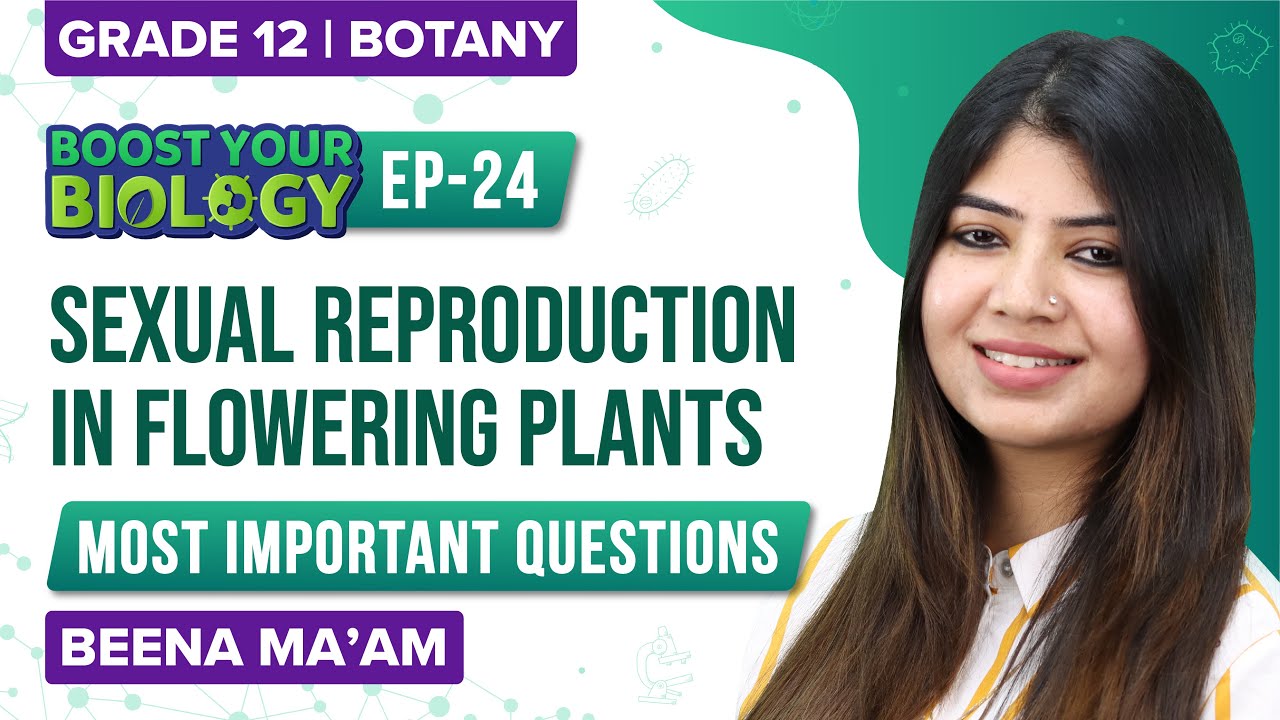According to the CBSE Syllabus 2023-24, this chapter has been renumbered as Chapter 1.
Reproduction in plants includes both sexual and asexual means. Most flowering plants reproduce sexually, ultimately producing flowers. Flowers are vital in the process of sexual reproduction. This is why flowers are also referred to as the reproductive part of a plant. The complete flower typically consists of:
- Pedicel
- Sepals
- Petals
- Calyx
- Stamen- the male reproductive part comprises the anther and filament.
- Pistil – the female reproductive part comprising three parts – stigma, style, and ovary.

See More: Important Questions for Class 12 Biology Chapter-2- Sexual Reproduction in Flowering Plants

Students can refer to the short notes and MCQ questions along with separate solution pdf of this chapter for quick revision from the links below:
- Sexual Reproduction in Flowering Plants Short Study Notes
- Sexual Reproduction in Flowering Plants MCQ Practice Questions
- Sexual Reproduction in Flowering Plants MCQ Practice Solutions
Sexual Reproduction in Plants
Pre-Fertilisation: Structures and Events
The male and the female reproductive structures in flowers, the androecium and the gynoecium, differentiate and further undergo development. Discussed below are the male and female parts in brief:
Stamen, Microsporangium and Pollen Grain
- Stamen consists of two parts – filament, the slender and long stalk and the anther, the bilobed structure, each lobe having two thecae; hence they are dithecous.
- Anther is a tetragonal structure comprising microsporangia situated at the edge, two per lobe.
- The microsporangia develop into the pollen sacs later on. Microsporogenesis is the formation of microspores through meiosis from a pollen mother cell.
- Pollen grains are the representation of the male gametophytes. The maturity of the pollen grains is indicated by two cells – vegetative cels and generative cells.
Pistil, Megasporium and Embryo sac
- The female reproductive part of the flower, the gynoecium, may be monocarpellary or multicarpellary. Each pistil consists of – the stigma (pollen grains landing site), style (long slender section below stigma) and the ovary (pistil’s bulged section).
- The ovarian cavity present in the ovary comprises the placenta from where the megasporangia emerge, commonly referred to as the ovules.
- The ovule consists of the following structures- funicle, hilum, integuments, micropyle, chalaza, nucellus, embryo sac or the female gametophyte. An ovule is formed from a megaspore.
- The formation of megaspores from the MMC(megaspore mother cell) is referred to as megasporogenesis.
- Mostly, one of the four megaspores is functional and develops into the female gametophyte(embryo sac); the rest are degenerate.
- At maturity, a typical angiosperm embryo sac, although it depicts 8-nucleated but is 7-celled.
Stages of Sexual Reproduction in Flowering Plants
Based on the presence of either stamen or pistil or both, a flower can be classified as unisexual or bisexual. Sexual reproduction in Flowering plants is divided into three stages:
Pollination
Pollination is a process of transferring the pollen grains across the anther and the stigma of the same flower of a plant or to a flower of different plants for the process of fertilisation and the production of seeds. The agents involved in transferring the pollen grains are birds, wind, animals, and water.
Read More on Pollination, here
Kinds of Pollination
- Autogamy – Pollination takes place within the same flower wherein the pollen grains from the anther are transferred to the stigma of the same flower.
- Geitonogamy – In this type of pollination, the pollen grains are transferred from the anther to the stigma of a different flower but of the same plant.
- Xenogamy – It is the transfer of pollen grains from the anther to the stigma of a different plant.
Formation of a Zygote
After the pollination, the male gamete is transferred down through the style of the pistil to the ovary and the male gamete are fused with female gamete to form a zygote. The zygote is located near the embryo sac situated at the micropylar end where the embryo develops. Typically, zygote splits only after some amount of endosperm is formed. This ensures nutrition is rendered to the developing embryo.
For more information on Plant Reproduction, watch the below video

Formation of Fruits and Seeds
After the formation of a zygote, it is allowed to develop in an embryo. The ovules develop into seeds and the ovary develops into a fruit. The ultimate product of sexual reproduction is seeds, in angiosperms. Typically formation of seeds takes place within fruits. Seeds are advantageous structures in the following ways:
- The process of seed formation is dependable as other reproductive processes(fertilisation and pollination) are water-dependent.
- For dispersal to newer habitats, seeds have a better adaptive strategy helping species to colonize other areas.
- Young seedlings are self-nourished until photosynthesis, as they have enough food reserves.
- Generates new genetic combinations resulting in variations.
- Seeds(dormant and dehydrated) can be stored for usage throughout the year.
Check out: Biology Revision Notes For Class 12 Chapter 2 Sexual Reproduction in Flowering Plants
Few Important Questions
- What is pollination?
- What is the function of the ovaries in a flowering plant?
- What are the female and male reproductive parts of a flower called?
Learn more about reproduction and their types from the topics given below:
| Sexual Reproduction In Plants | Asexual Reproduction In Plants |
| Different Modes of Plant Reproduction | Sexual Reproduction in Flowering Plants |
Frequently Asked Questions on CBSE Class 12 Biology Notes Chapter 2 Sexual Reproduction in Flowers
What is meant by pre-fertilisation?
Pre-fertilisation is the process that occurs before the actual fertilisation, i.e. the process before the fusion of gametes.
What is an embryo sac?
The female gametophyte of a seed plant consists of a thin-walled sac within the nucellus that contains the egg nucleus and other nuclei, which give rise to endosperm on fertilisation.
What is a zygote?
The zygote is a fertilised egg cell that results from the union of a female gamete (egg) with a male gamete (sperm).
Comments